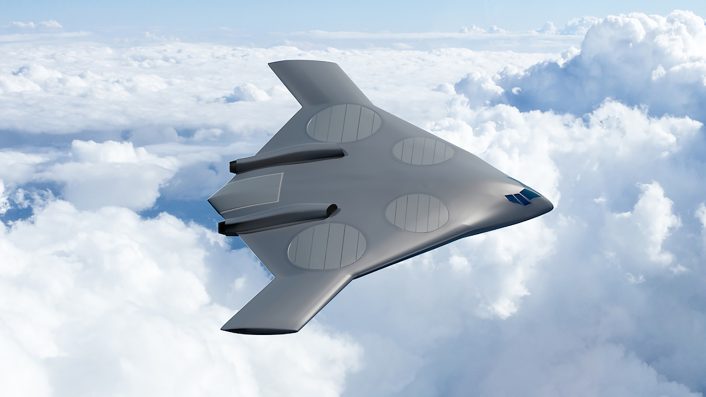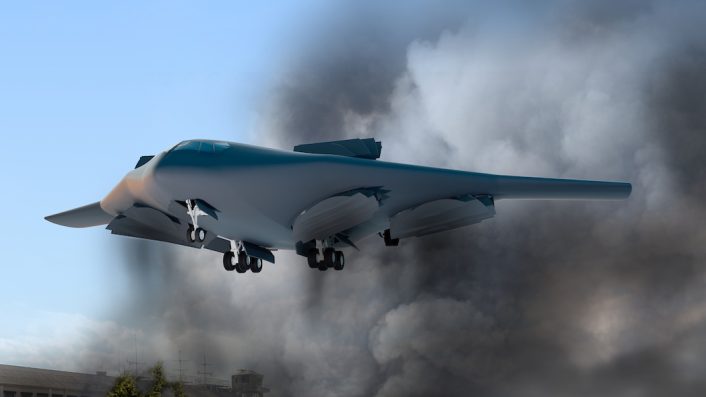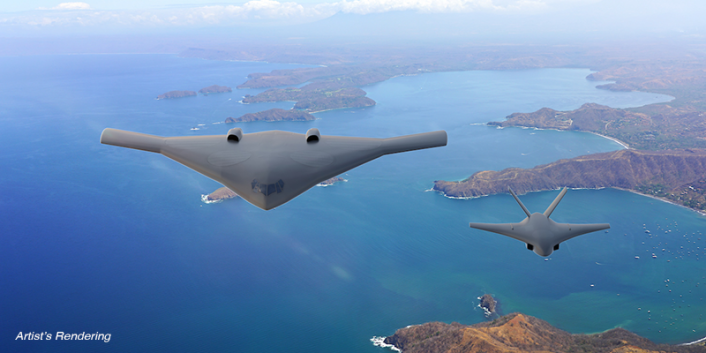Aurora Flight Sciences’ Fan-in-Wing technology development progresses: flight testing of the final design is targeted for 2027.
Aurora Flight Sciences, a subsidiary of Boeing, has just unveiled new renderings showcasing its new X-plane concept supporting airborne logistics and personnel recovery operations in areas where traditional runways are unavailable. The new aircraft leverages cutting-edge fan-in-wing (FIW) technology, as well as speed, stealth, and vertical lift capabilities, as part of a runway-independent solution for contested environments.
DARPA’s SPRINT Program
Aurora’s ambitious design is part of the Defense Advanced Research Projects Agency’s (DARPA) Speed and Runway Independent Technologies (SPRINT) program. The objective of SPRINT is to create and demonstrate an X-plane that integrates high-speed flight and runway independence, which could revolutionize aircraft mobility in military operations.
The FIW technology that Aurora and Boeing are developing plays a crucial role in this vision. By integrating lift fans within the wings of the aircraft and adopting a blended wing body design, the technology enables the agility of vertical lift without compromising on the payload capacity or aerodynamic efficiency typically associated with fixed-wing aircraft. This innovation is expected to address significant challenges in operating across distributed and contested military bases.
Design Details: The Uncrewed Demonstrator
The initial prototype being designed under the SPRINT program is an uncrewed aircraft with a wingspan of 45 feet and the ability to carry a 1,000-pound payload. The aircraft will feature a propulsion system powered by off-the-shelf turbofan and turboshaft engines, enabling it to reach speeds of up to 450 knots true airspeed (KTAS). This combination of speed and agility could provide game-changing capabilities for the U.S. military, enhancing both stealth and operational flexibility.
“The SPRINT program offers the opportunity to deliver a game-changing capability to the warfighter,” said Mike Caimona, president and CEO of Aurora Flight Sciences. “High-speed, stealth, runway-independent transport could help keep warfighters safe and effective in contested environments, so no domain is out of reach for our U.S. military.”
Testing the Future of Flight
Aurora envisions a future where this fan-in-wing technology can be scaled to create a family of aircraft, including medium and heavy lift variants. These larger aircraft could have wingspans up to 130 feet, featuring multiple lift fans and payload capacities that rival current fixed-wing military transports. For example, a manned version with four lift fans and a 40-foot payload bay could achieve the same payload, range, and speed as traditional military transport aircraft, all while offering the critical advantage of vertical takeoff and landing (VTOL).
New renderings have just been released.
The first one depicts an Aurora Flight Sciences’ demonstrator and the second one shows the Aurora’s “vision system” concept, with SPRINT technologies scaled for use in larger aircraft.
Compared to the renderings unveiled earlier this year, the “new” demonstrator is similar, although it shows a smaller, more compact aircraft with a similar wing-body blending. The aircraft has two fins like the first image, but the wings seem shorter, and the overall body looks narrower. Like the first rendering of May 2024, this “new” design focuses on minimal surface features and a sleek profile to enhance LO (Low Observability); the circular fans in the wings suggest the same fan-in-wing technology for vertical lift and agility.
The rendering of the larger aircraft is more interesting: the concept showcases a broad, almost diamond-shaped blended wing body. It has four visible circular fans embedded in the wings and a slightly different tail design compared to the other renderings. The larger scale of this aircraft suggests a heavy-lift role, yet it retains the stealth-oriented, sleek surfaces and integrated engine design. This image emphasizes scalability, with the concept being much larger than the previous ones, supporting the idea of future vertical lift aircraft for medium to heavy-lift missions.

Another rendering shows the heavy aircraft concept taking off from an unprepared runway.

Aurora’s development team has already completed a series of important tests as part of the SPRINT program. In early 2024, they conducted a ground effect test using a scale model with a 4.6-foot wingspan and three lift fans. The test demonstrated that the downward forces created by the lift fans during hover are minimal, confirming the aircraft’s landing gear design is well-suited to avoid pitching issues during landing. Further tests, including wind tunnel experiments, are scheduled for late 2024 and early 2025. These tests will assess the stability, control, and aerodynamic effects of the FIW technology using larger-scale models.
The current phase of the program is expected to run until May 2025, with a preliminary design review slated for April 2025. Flight testing of the final design is targeted for 2027, marking a major milestone in the advancement of this revolutionary vertical lift platform.
Aurora Flight Sciences’ innovative approach, in partnership with Boeing, could reshape the future of military air mobility, offering both flexibility and speed for complex and contested environments. The fan-in-wing X-plane represents a leap forward in aviation technology, potentially transforming the capabilities of vertical lift platforms for decades to come.


